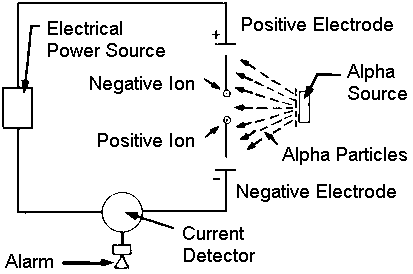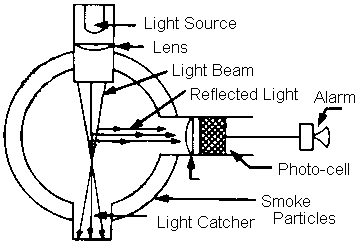Residential fires have become a significant problem throughout the United States. The National Fire Protection Association (NFPA) estimates that residential fires in the United States kill 4,000 - 5,000 persons annually and resulted in injury to 20,000 more.
According to the Federal Emergency Management Agency, in its National Fire Incident Reporting System, the leading causes of residential fires in one- and two-family dwellings were heating (31 percent), cooking (15 percent) and incendiary or suspicious (10 percent).
In residential properties, cigarettes are still the leading cause of accidental multiple death fires (those fires that are fatal to three or more persons) by a factor of two to one. Fires resulting from fixed or portable heating equipment - wood stoves, kerosene heaters, gas or electric cooking stoves, etc. - are the second most common cause of accidental multiple death fires in residential properties.
WHEN AND WHERE FIRES START
An NFPA study of 1982 multiple death fires shows that residential fires accounted for nearly 90 percent of the fires and 85 percent of the deaths. This study also showed that 83 percent of the fires originated in the living room, 20.8 percent in the bedroom, 11.7 percent in the kitchen, 7.6 percent at exits, 5.1 percent in a structural area, 1.5 percent in a heating equipment room, and 3 percent in other areas. About 81 percent of the multiple death fires occurred between 8 p.m. and 8 a.m. when people are asleep and unaware of the development of a fire until it is too late.
Fire officials estimate that at least 50 percent of lives lost due to residential fires could be saved by installing early warning fire detection devices and developing and practicing an evacuation plan.
CHOOSING AN EARLY WARNING SYSTEM
To protect the purchaser and establish criteria for the manufacture and installation of residential fire detection systems, the National Fire Protection Association has developed NFPA No. 74, Standard for Household Fire Warning Equipment.
There are two types of residential fire detection systems: heat and smoke detectors. The basic residential detection system, according to NFPA 74, relies primarily on the use of smoke detectors.
The standard does not require the use of heat detectors as part of the basic protection scheme, but it recommends that heat detectors be used to supplement the basic smoke detector system.
Smoke detectors consist of a sensing chamber, alarm sounding device and a means of electrical power transmission. There are two kinds of residential smoke detectors: ionization and photoelectric.

Ionization. The ionization smoke detector uses a radioactive source (typically Americium-241, an alpha-emitting radionuclide) to ionize the air within the sensing chamber. The ionization of air by the radioactive particle causes a very small flow of electrical current. When smoke from a fire enters the chamber, its presence causes a reduction in the current's flow. The electronic circuitry senses the reduced flow and triggers the alarm horn (Figure 1).Photoelectric. Photoelectric smoke detectors use the principle of scattered or reflected light to indicate the presence of visual smoke. They work much like the automatic eyes used to open doors. When there's no smoke, the chamber is dark. The light shines across the chamber and is received in a light trap on the far side. When smoke is present in the chamber, a photocell located at right angles to the light source senses the light scattered off the smoke particles and, at a certain level of illumination, triggers the alarm horn (Figure 2).

Both detectors sense the presence of smoke. The photoelectric detector senses the large, visible smoke particles. The ion chamber detector senses the small, invisible particles.
If a fire starts and slowly smolders in upholstery without visible flame, a good photoelectric unit would be superior to a good ion chamber detector in terms of detection time. But, if the fire has flames, a good ion chamber will detect it faster than a good photoelectric detector. For this reason, it's a good idea to use both types in your detection system.
Combination. Recently, manufacturers have begun to introduce and market smoke detectors that combine ionization and photoelectric sensors in the same unit. These units should combine the advantages of both sensors into an advanced unit that will detect smoke from a broader spectrum of fires (smoldering or flaming). As the demand for these units increases, the cost should decrease to a competitive level.POWER SOURCESHeat detectors. A residential fire detection system may also include a heat detector. There are two types of heat detectors: fixed temperature and rate-of-rise.
Fixed temperature detectors. These detectors are preset to sound an alarm when the air temperature exceeds the fixed temperature. The most popular fixed temperature detectors used in homes are preset to sound an alarm when the temperature exceeds 135 degrees F. Other units are available to be preset up to temperatures of approximately 200 to 225 degrees F. These detectors may be used in an attic where summer temperatures normally may reach 135 degrees F.
Rate-of-rise heat detectors. These sound an alarm when the temperature in the immediate vicinity rises higher than the preset rate per time factor (minutes, etc.).
The other advantage is that you can install a smoke detector in an existing dwelling where an appropriately placed electrical outlet is not available.
The major disadvantage is that the batteries need to be replaced once a year.
LOCATION
The basic (minimal) detection system should consist of one smoke detector outside of each sleeping area and one additional smoke detector unit on each additional living level, including the basement and excluding unfinished attics, crawl spaces, etc. If hallways are longer than 40 feet between the sleeping and living areas, use two smoke detectors.
A good system should include both types of smoke detectors one plug-in smoke detector and one battery-operated smoke detector. You might consider installing a photoelectric unit in the bedrooms of any family members who smoke.
Heat detectors or additional smoke detectors can supplement the basic system. Consider these areas for heat detectors: kitchen, dining room, furnace room, attic, garage or utility room.
MOUNTING
Follow the manufacturer's recommendations for mounting and servicing the detectors. Place the first unit in the center of the hallway ceiling between the bedrooms and the living area, not closer than 12 inches from the wall.
Determine additional locations according to your lifestyle. If you must wall-mount the detector, it should be mounted no closer than 6 inches and farther than 12 inches from the ceiling. This is to avoid the dead air space.
If you own a mobile home, you may want to consider wall- mounting your units on an inside wall to avoid some of the problems of ceiling drafts.
Smoke detectors should not be located in the following areas:
BUYING TIPS
With the advent of modern electronic circuitry, the single-station smoke detector has become the subject of strong sales rivalry by several companies vying for the household market. The result is that some sales personnel are using high-pressure tactics. Therefore, it is wise for the potential buyer of a residential fire alarm system to be cautious. Here are some buying tips:
AN ESCAPE PLAN
Your job is not done, however, after you buy and install smoke detectors. There remains the task of training your family to respond properly when a fire alarm is sounded.
The first thing to do is to develop a family plan for escape. It is a good idea to make a floor plan with two escape routes.
Step A (basic floor layout):For two-story residences, it probably will be necessary to provide a chain ladder (the first choice) or a rope ladder to escape. Again, this requires training because the person using the ladder must make certain he or she is not going to be crawling past a life- threatening fire on a lower floor and must know how to use the ladder.
Every member of your family should know exactly what he or she is expected to do in the event of a fire. This can be accomplished by holding family fire drills.
The first thing to learn is that no one should jump up out of bed and stand up when the alarm sounds. Instead, all family members should learn to crawl out of bed onto the floor. In the early stages of a fire, the toxic and super-heated fire gases lie in layers near the ceiling. It is very important to stay below these gases. There have been many cases where it appears that victims slept through the build-up of deadly gases only to die when they stood up and inhaled them.
All members of your family should crawl to their bedroom doors. If the door is closed, feel it. If it is not hot to the touch, it is probably safe to place your body weight against the door and open it slowly to see if smoke and flames have filled the hallway. Use your body weight to keep the door from opening quickly in the event that there is heavy smoke or fire in the hallway or an explosion of fire gases.
If the hallway appears clear, the first member of the family into the hallway can then crawl from one bedroom to the next to make certain that all family members are awake.
Use the hallway and nearest outside door for escape only if you are very certain that no flames are visible and there is little or no smoke along the path you must travel.
Select a meeting place for all family members outside the home near the tree, mailbox, etc. Everyone should go immediately to this meeting place. When everyone is accounted for, someone can be selected to go to a neighbor's home to call the fire department.
When calling the fire department, speak slowly and distinctly so that you are sure the fire department understands whose house is on fire and where it is located. In fact, you should practice giving directions to your home, the same directions you would give to a visitor who had never been there before.
Stay outside! Once everyone is out of the house, no one should return. More than one person has been killed by going back into a fire to save a few dollars worth of keepsakes.
Obviously, learning the fire escape plan is like learning anything else - you get better at doing it if you practice. Periodically, preferably once a month, someone in the family should sound the alarm in the middle of the night and then monitor the actions of other family members to see that they comply with the fire drill plans.
And remember installation of an early warning fire alarm system combined with a well-rehearsed plan for escape may save the lives of you and your family.
Publication #: GO1907
This document is published by the University Extension, University of Missouri-Columbia, Columbia, MO 65211. Publication date: October 1993.
David E. Baker, Department of Agricultural Engineering, and Paul Adams, Director, Missouri Fire and Rescue Training Institute. University Extension, University of Missouri-Columbia, Columbia, Missouri 65211.
Issued in furtherance of Cooperative Extension Work Acts of May 8 and June 30, 1914, in cooperation with the United States Department of Agriculture. Ronald J. Turner, Interim Director, Cooperative Extension Service, University of Missouri and Lincoln University, Columbia, Missouri 65211. An equal opportunity institution.
Disclaimer and Reproduction Information: Information in NASD does not represent NIOSH policy. Information included in NASD appears by permission of the author and/or copyright holder. More